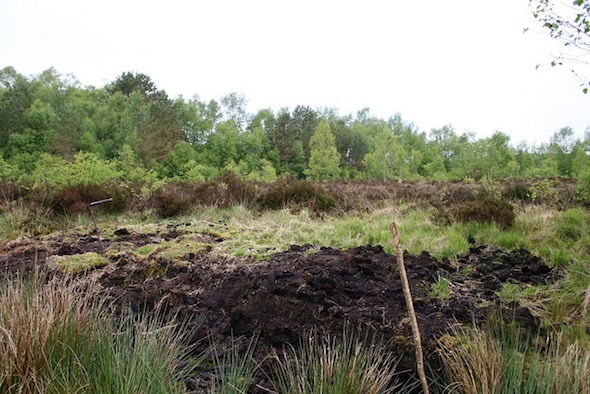Ireland’s Turf War Plan Is ‘Bad News for Climate’
Ireland is embroiled in a struggle between traditionalists who want to continue burning peat as fuel and conservation groups who say the practice adds significantly to greenhouse gas emissions.
By Kieran Cooke, Climate News NetworkThis piece first appeared at Climate News Network.
LONDON — The cutting of turf or peat is one of the traditional images of life in Ireland. Many Irish households, particularly in rural areas, still rely on turf cut from the country’s bog lands for fuel – especially in these times of rising energy prices.
Environmentalists have long argued that these turf bogs or peat lands should be preserved. The bogs are not only home to a wide variety of flora and fauna: they also soak up excess water and are valuable carbon sinks, absorbing large quantities of greenhouse gases (GHG) and so curtailing climate change.
The European Union agrees and has threatened to impose large fines on Ireland unless it acts to preserve its bog lands, which are categorised as special areas of conservation.
Government attempts to stop turf cutting in many areas have failed: turf farmers insist on their right to cut turf, as generations before them have done. A leader of the turf cutters has been elected to the Dail, the Irish Parliament.
Now the Dublin Government has come up with a draft peat lands strategy which it hopes will bring peace to the bogs and head off the EU’s financial penalties: the strategy, while restricting turf cutting in some areas, allows it to continue on 45 bogs around the country.
‘Fantasy’ compromise
The plan, says the Government, is to meet national conservation targets while at the same time addressing the needs of affected communities. The strategy talks about the need to conserve environmental sites but says very little about the role of bogs in preventing climate change.
An Taisce, Ireland’s natural trust and the country’s oldest environmental body, has condemned the government’s plan as “the stuff of fantasy”.
“Bogs are a vital store of carbon and burning turf releases far more climate-altering gases than coal”, says An Taisce.
The strategy, it says, is inconsistent with both international and domestic scientific advice on carbon management. “Of all fuels, turf is the worst in terms of negatively affecting the climate.”
Other groups accuse the Government, by allowing turf cutting on a large number of bogs, of pandering to a powerful farming lobby and playing politics rather than attacking the issue of GHG emissions.
Massive emissions threat
In 2011 the Government’s own Environmental Protection Agency (EPA) issued a report on the country’s bog lands which said that peat land degradation and burning resulted in 10 million tonnes of GHG emissions each year – equivalent to Ireland’s annual car emissions.
Peat bogs are formed over thousands of years, the result of the rotting down in flooded hollows in the land of reeds, sedges, moss and other vegetation.
Pollen grains locked away in peat bogs not only form a botanical record of the past but can also be used to provide evidence of how the climate has changed – much like ice cores in polar regions yield details of historical atmospheric levels of CO2.
Traditionally, turf was cut by hand, using a spade or slane. In the 1950s much of Ireland’s turf cutting became mechanized with the creation of a state-owned turf company. Now only about 15% of Ireland’s raised peat lands are still intact.
Your support matters…Independent journalism is under threat and overshadowed by heavily funded mainstream media.
You can help level the playing field. Become a member.
Your tax-deductible contribution keeps us digging beneath the headlines to give you thought-provoking, investigative reporting and analysis that unearths what's really happening- without compromise.
Give today to support our courageous, independent journalists.






You need to be a supporter to comment.
There are currently no responses to this article.
Be the first to respond.